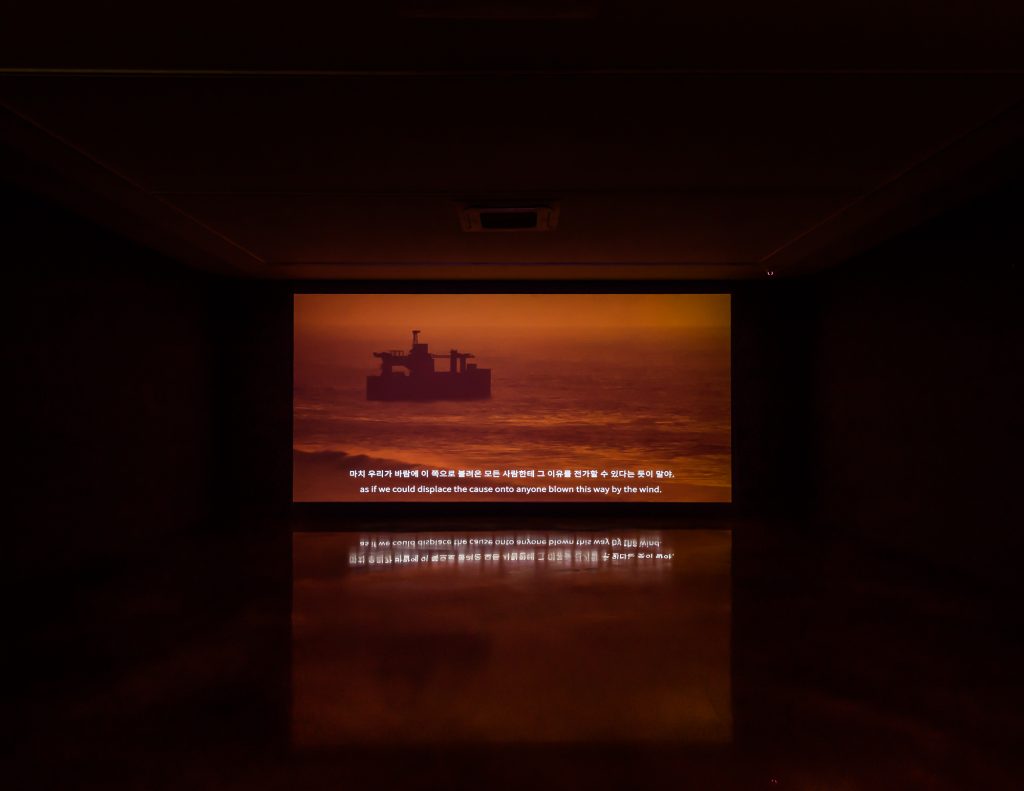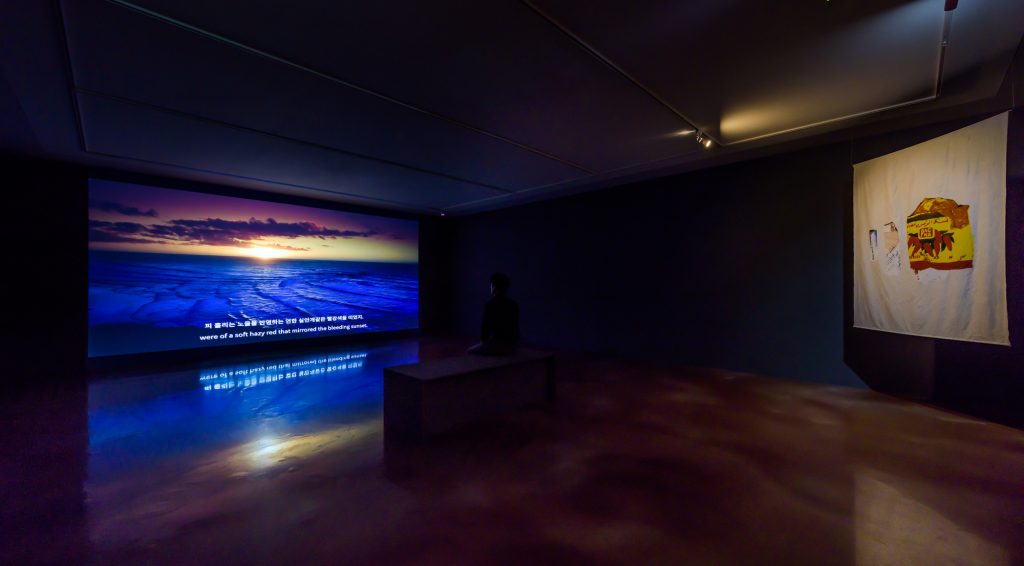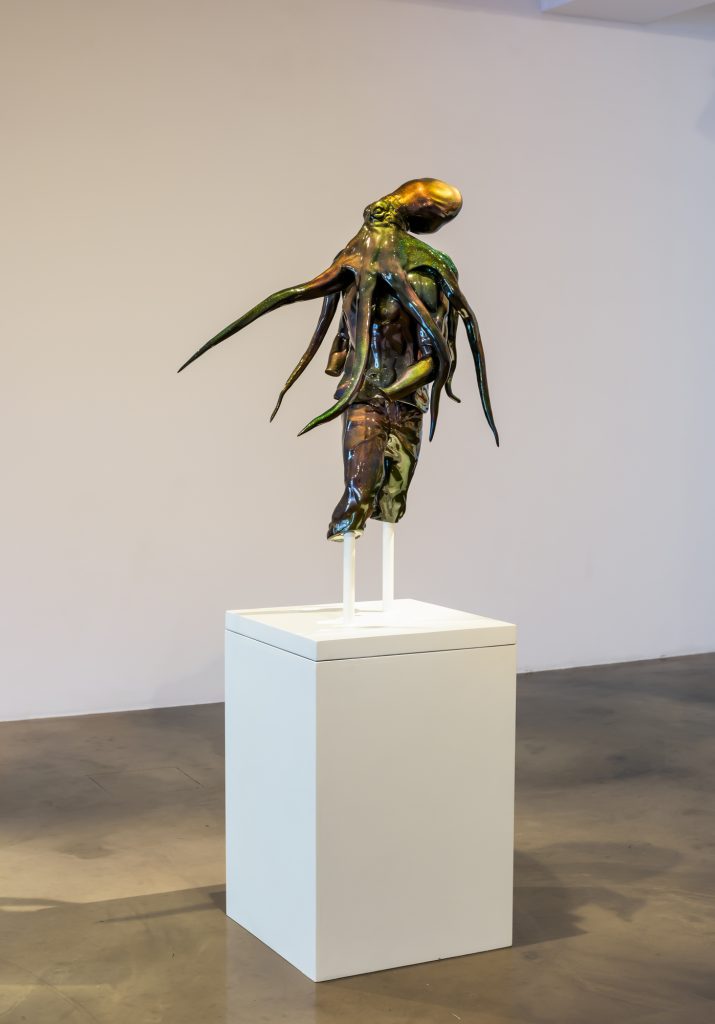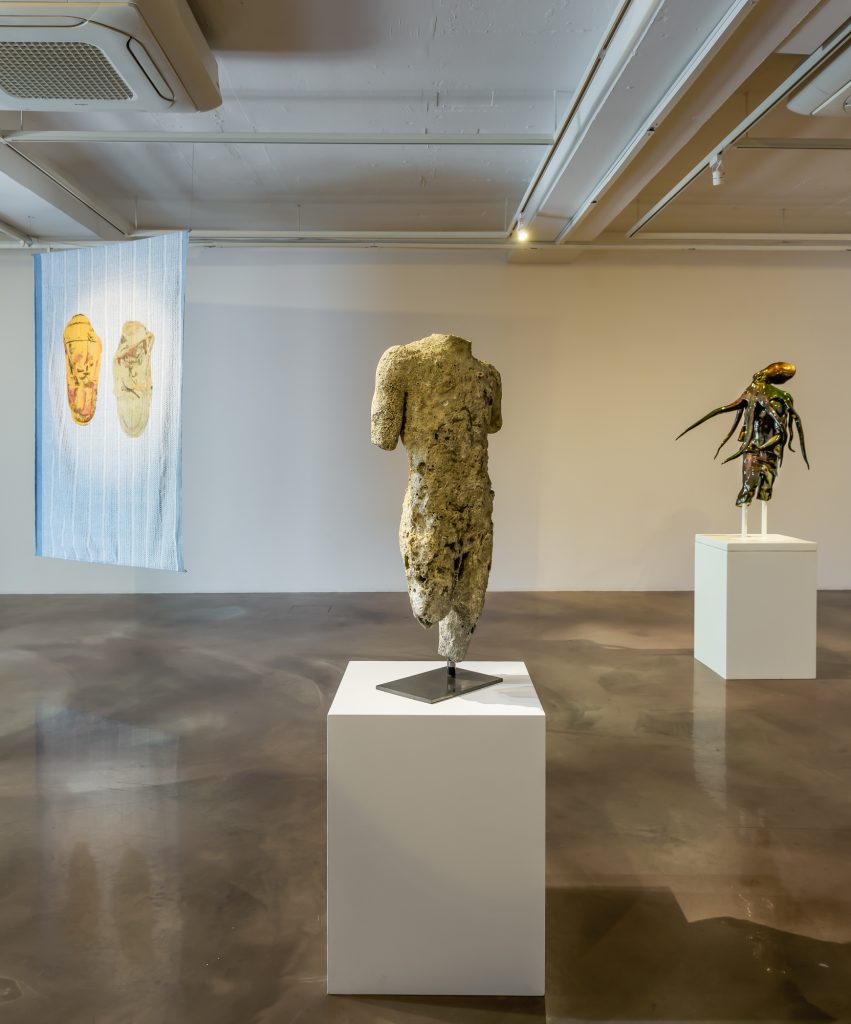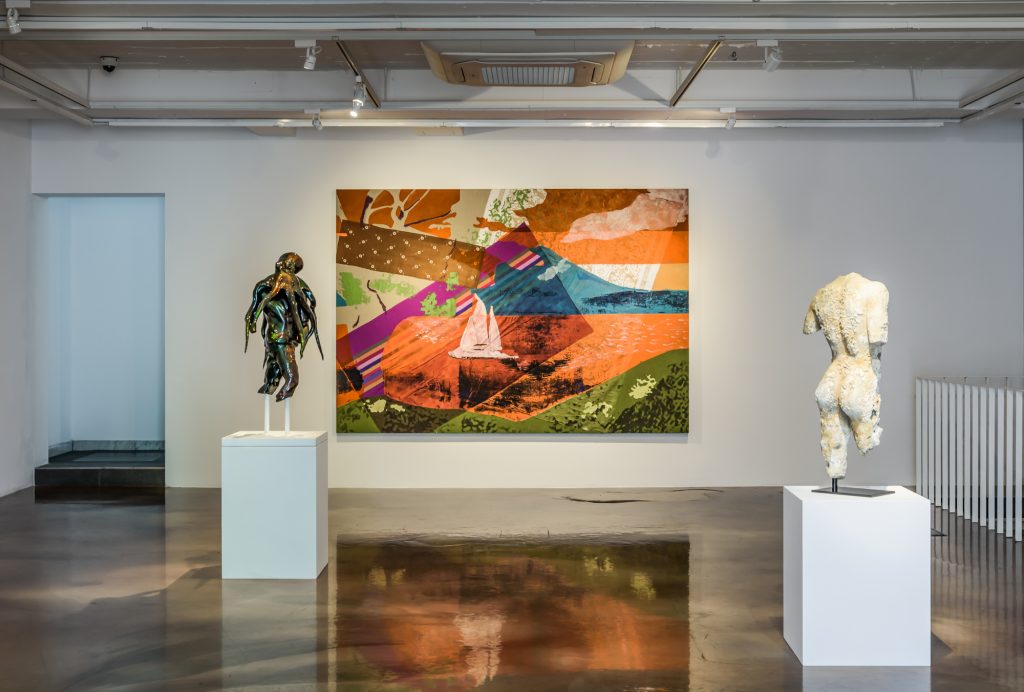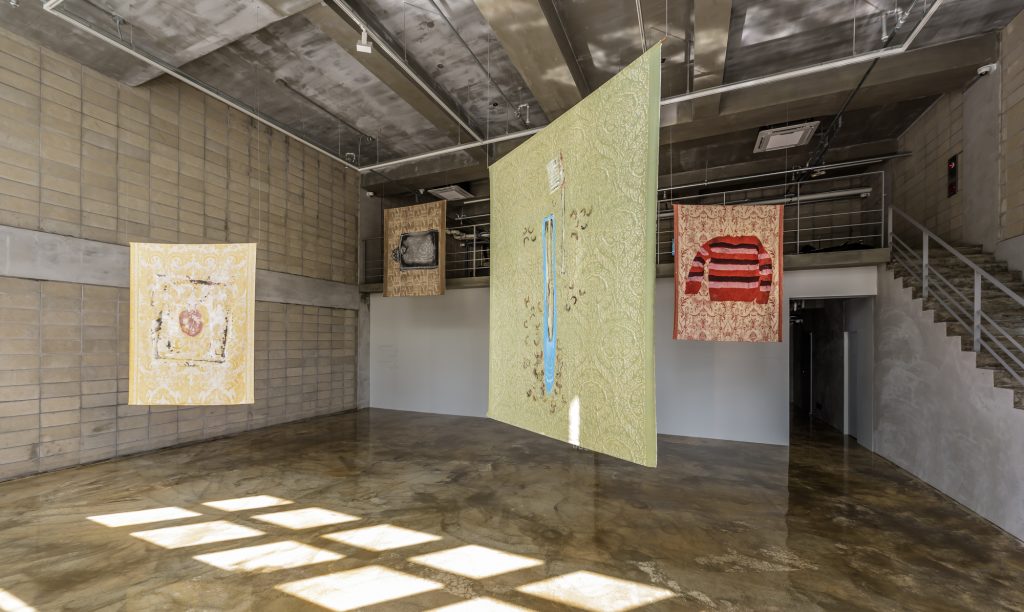Exhibition
Leviathan: On Sunspots and Whales premiered the presentation of the fourth episode of the ten-part episodic fictional narrative Leviathan Cycle. The films take place in an imaginary future where just a few survivors remain on Earth after some unexplained cataclysm in the solar system. Each episode is titled after one of the survivors and presented from the perspective of an individual narrator representing a different nationality, ethnicity, gender, and culture. The textile paintings, presented as a series of hangings across the two gallery spaces, were developed in dialogue with the renowned textile manufacturer Fortuny and incorporate several of their handmade fabrics. Artifacts and objects lost by migrants during sea crossing provide visual references for the textile works.
The exhibition also featured a new sculpture inspired by an ancient statue in the Barakat Gallery collection and a new painting inspired by the Korean folktale of “Yeono and Seo.” A Hellenistic piece in the Barakat collection representing a male torso is an excellent example of the contrapposto stance in sculptures from the era, with coral reef remnants on the verdigris on the surface indicating that it laid submerged in the sea for a considerable time. Inspired by that sculpture, Shezad Dawood has created On Becoming Virtual Octopi, a male torso with an octopus head. Thus crossbred with an octopus, an organism with such advanced intelligence and senses that it has even been suspected of having an outer space origin, the form of this work envisions an evolved creature with entirely new senses.
Public Programme
shezad dawood: artist talk
9 September 2018
Contributors
Kim Namsoo
Kim Namsoo (born in 1969) is a choreography critic, researcher, and planner. His career in criticism began in 2002 when his work “Hong Sung-yop: The Ideas of a Reflective Modernist” was selected in the dance criticism category of the 9th Dance Art Awards held by the dance monthly Body. He has been involved in various activities spanning the fields of dance, theater, fine arts, academia, and multidisciplinary art including a period as an inaugural editorial board member for the 2006 launching of the performing arts magazine Pan, a three-year stint as a curatorial researcher for the Nam June Paik Art Center in 2008, one year as a senior researcher for the National Theater of Korea in 2011, one year as an Asian Cultural Archive team leader and dramaturge for the Asia Culture Center’s Asian Culture Development Institute in 2013, and two years as a participant in the Antler Library project for the G-HUB Pangyo in 2014. He has coauthored the book The Return of Nam June Paik and served as a planner and editor for Nam June Paik: From Horse to Christo.
Read Paper
Jung Eunhae
Jung Eunhae (born in 1972) is a painter, art therapist, and eco-art educator. She studied fine art at Queen’s University in Canada and art therapy at the School of the Art Institute of Chicago. After spending her teen and young adult years in North America, first as an immigrant in Canada and then as an international student in the United States, she returned to South Korea and found home in a small village with a beautiful evergreen forest on Jeju Island. Now, she conducts nature workshops and implements various projects where community, ecology, healing, and arts intersect through the organization Jeju Eco Project OROT, which she founded with an environmental activist and a community organizer. Her publications include Don’t Be Afraid to Be Happy and Art Journal for Transformation and Growth.
Read Paper
Yi Jinkyung
Yi Jinkyung (born in 1963 as PARK Tae-ho) is a researcher and writer on sociology, philosophy, and economics. He has written on the topics of Marxism and modernity. His philosophy-related books include Philosophy and the Chimney Sweep, The Hitchhiker’s Philosophy Journey, Nomadism, and Ontology of the Subversive. He has also written The Reveries of Mathematics, a book for general audiences on the history of mathematics, and the film-related book Philocinema. He earned a doctoral degree from the Seoul National University Department of Sociology with a history of Western architecture titled “The Birth of the Modern Residential Space.” He has also written the Marxism-related books Marxism and Modernity, Capital beyond Capital, Marxism of the Future, Communism, and Masses and Flux as well as a book titled Philosophy Class for Life to promote good living. More recently, Yi has published Unprecedented Classics, a book about the classical fiction of the Joseon era, and Philosophizing Buddhism, an attempt at a modern interpretation of Buddhist teachings. He is active with the intellectual community Suyunomo 104 (www.nomadist.org) and has worked since 2003 as a professor in the Seoul National University of Science and Technology Department of Basic Education.
Nam SungHyun
Nam SungHyun (born in 1976) is an associate professor in the Seoul National University School of Earth and Environment Sciences. He is a member of the steering committee for the SNU College of Natural Sciences’ Research Institute of Oceanography and the deputy director of the advanced course in maritime policy. After earning a doctoral degree with research in the field of physical oceanography from the SNU College of Natural Sciences, he dedicated himself to defense technology research and development at the Agency for Defense Development, earning a silver medal at the 2008 Defense Science Awards. Between 2008 and 2014, he worked in the United States in the fields of physical oceanography and observational oceanography, having been selected for a postdoctoral research fellowship at the Scripps Institution of Oceanography at the University of California San Diego, a prestigious institution boasting the longest history worldwide in the fields of earth and environment sciences, oceanography in particular. He has served since 2017 as a representative for the South Korean government on the North Pacific Marine Science Organization (PICES) subcommittee on marine physics and climate. Since 2018, he has been active as a trustee of the Korean Society of Oceanography, an editorial board member of the Korean Society of Coastal Disaster Prevention, a delegate of the Korea Geophysical Union, and a member of the 2012 Busan Joint Assembly organizing committee for the IAMAS-IAPSO-IACS. Over the past 20 years, he has taken part in over 50 research ship observation trips in the Korean Peninsula’s littoral waters, on the California coast, and in the Pacific, Atlantic, and other major oceans. He has published some 40 papers in major domestic and foreign academic journals in related fields along with five books for the general public.
Read Paper


